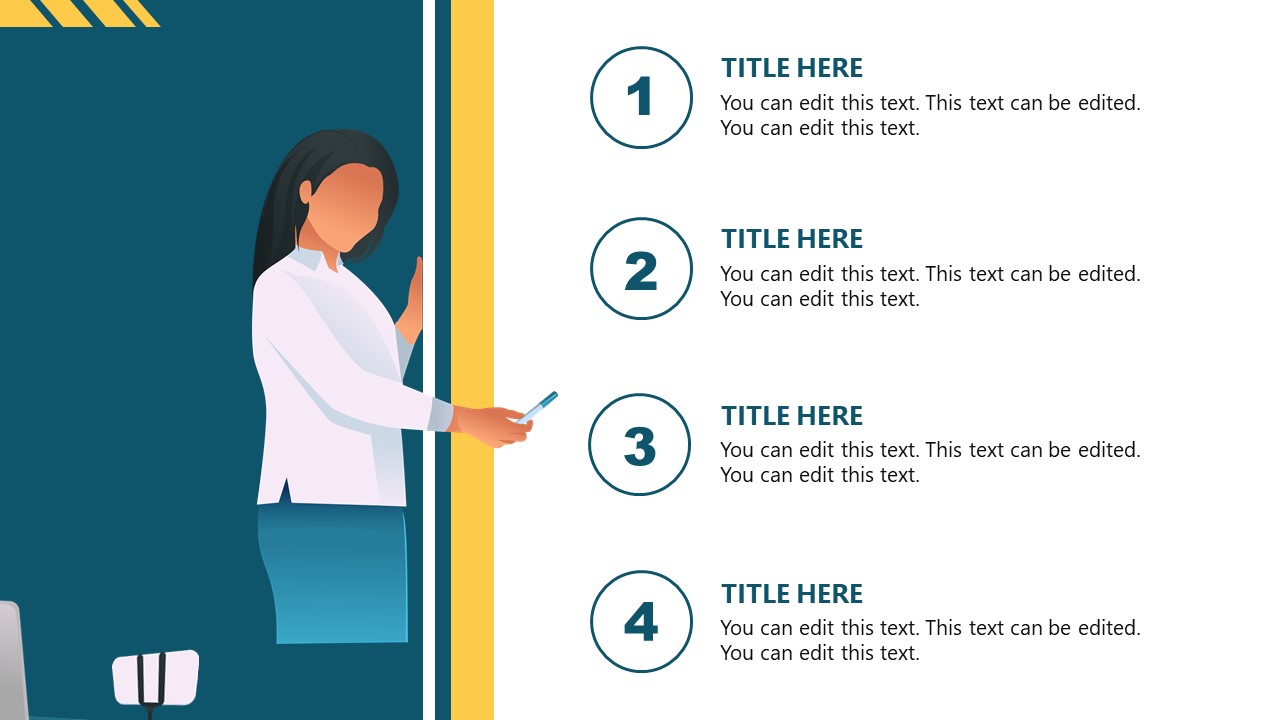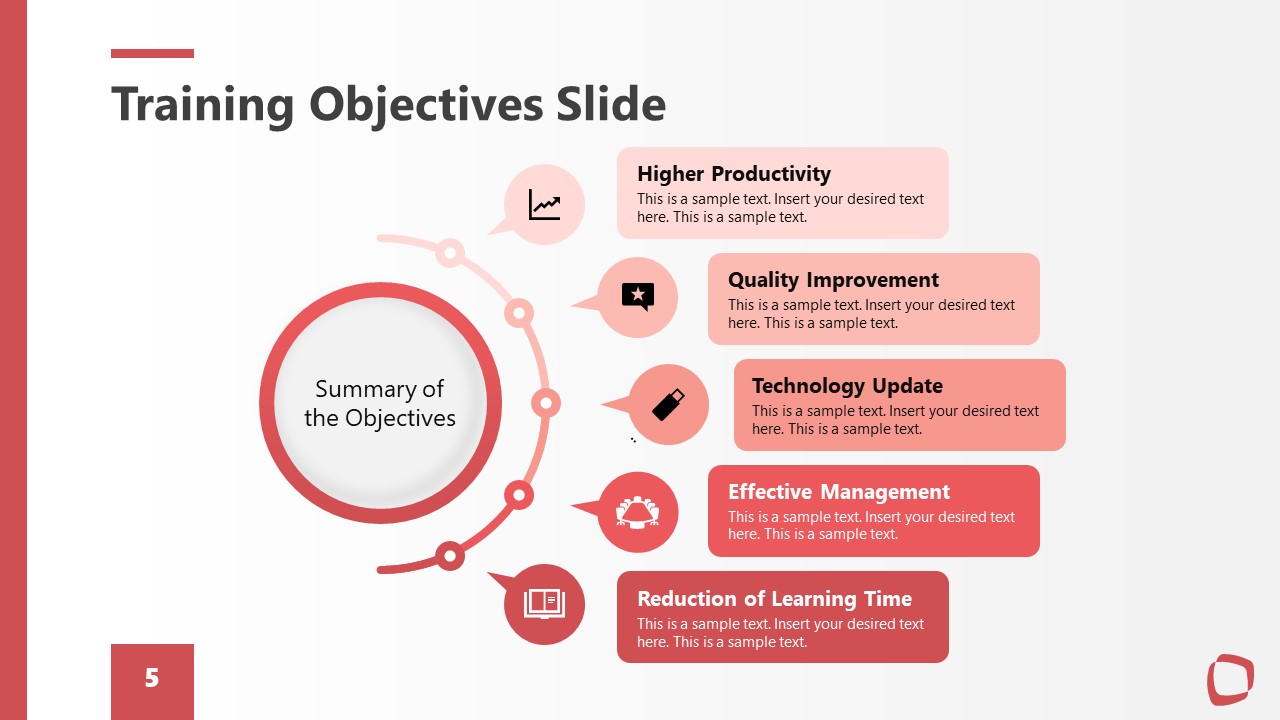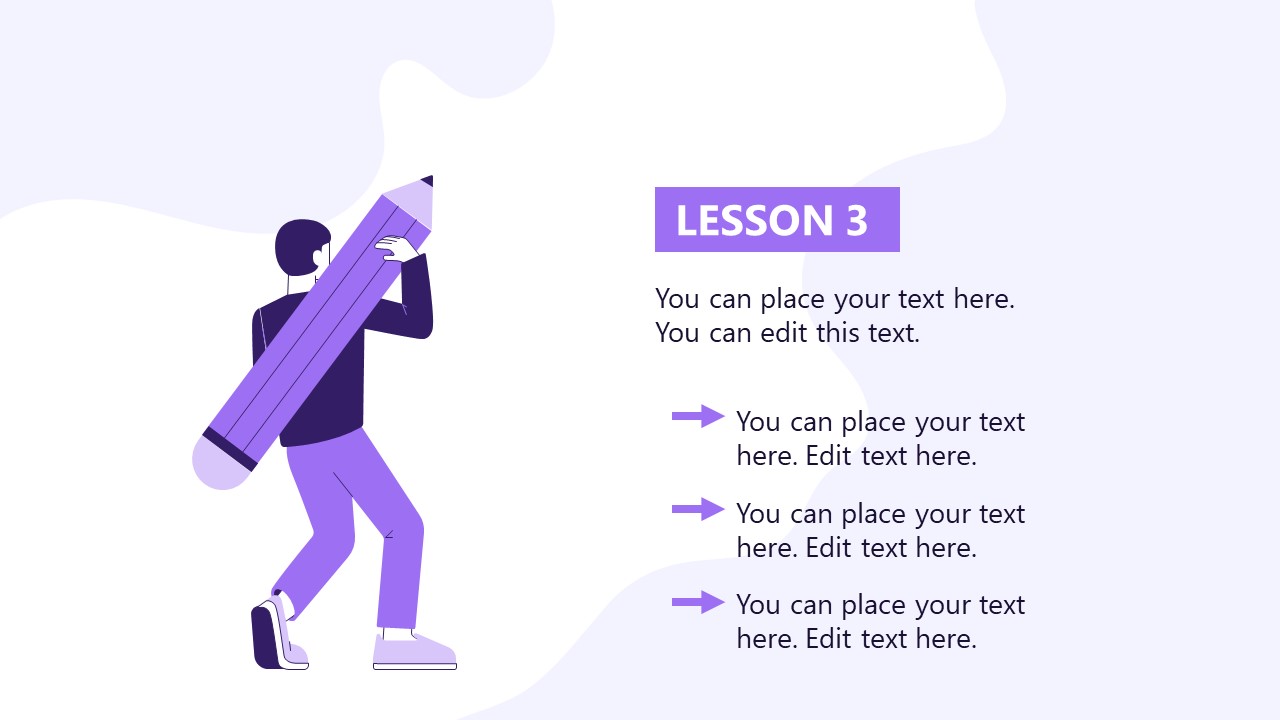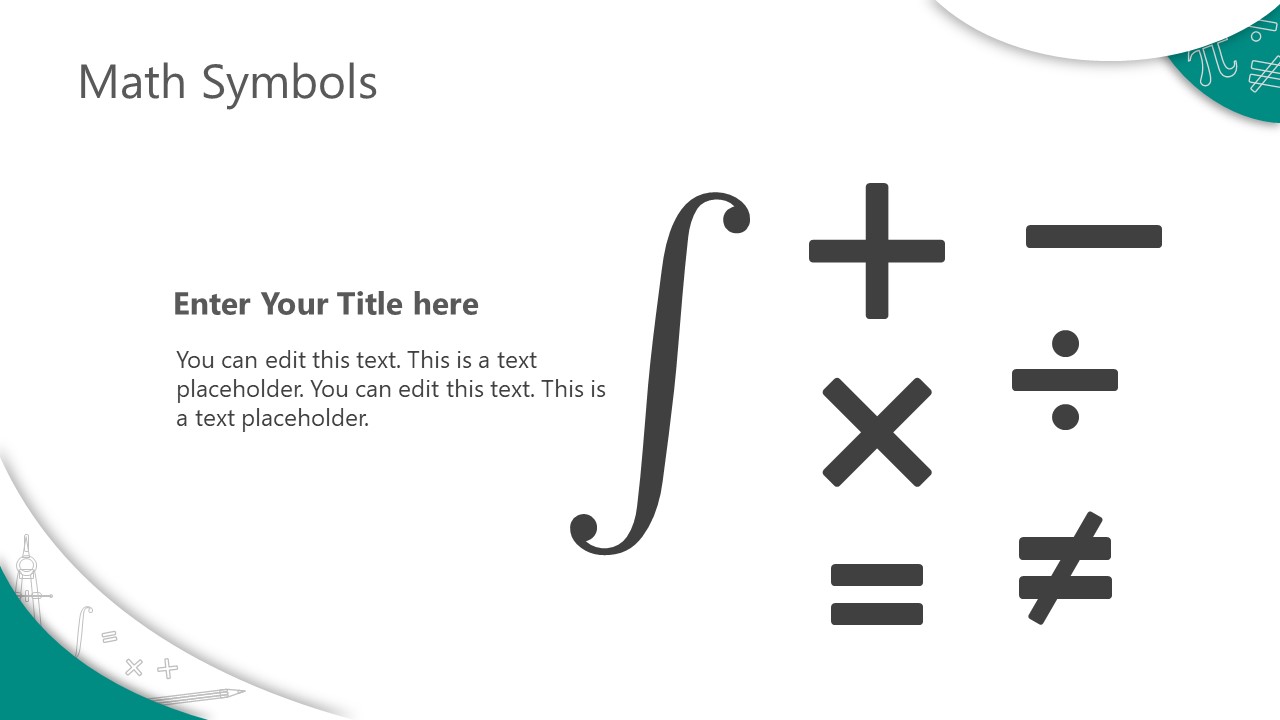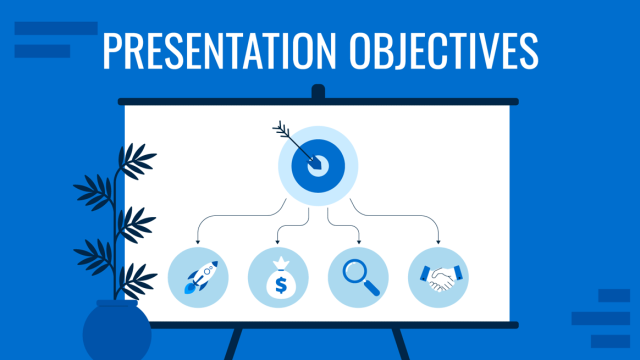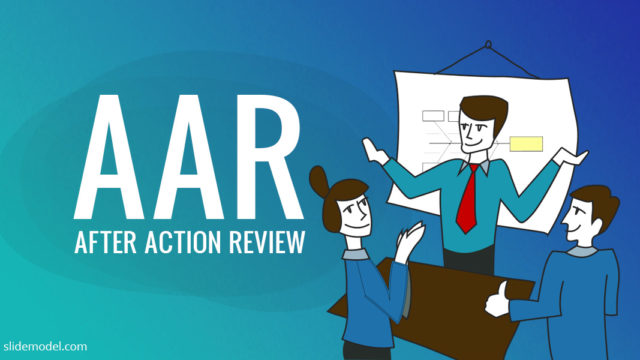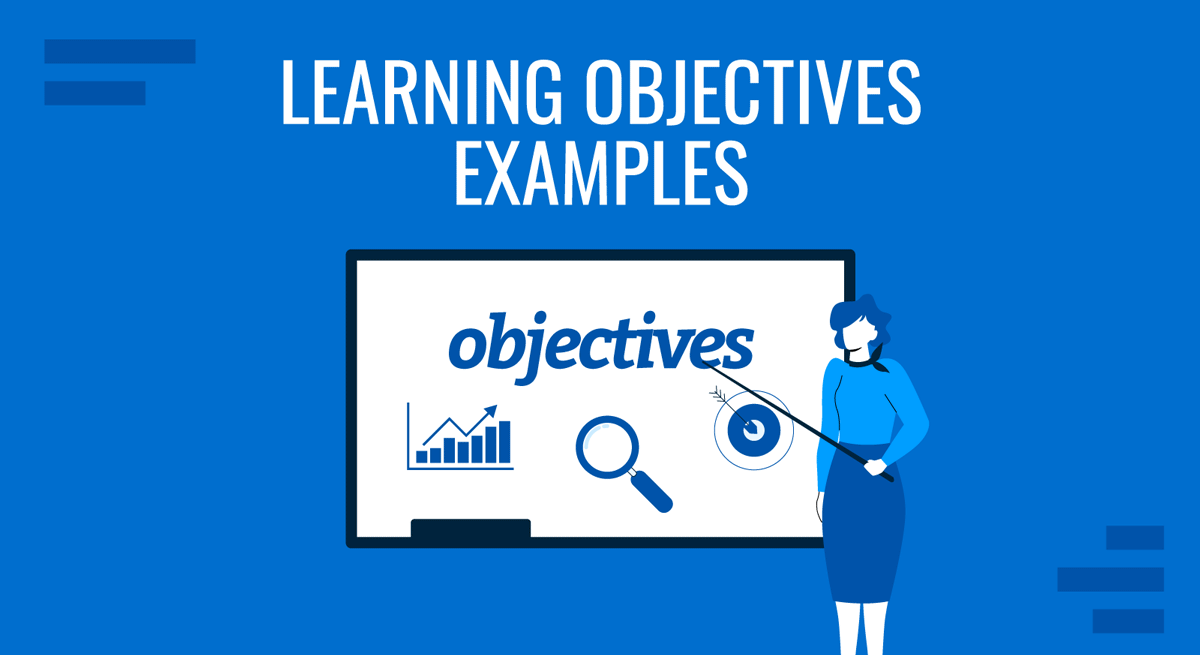
Learning objectives are the foundations of any course or training program. They provide a clear roadmap for both educators and learners. They set a direction for the learning journey by outlining the expected outcomes. Therefore, trainers need to ensure their programs are purposeful, engaging, and aligned with their educational goals.
In this article, we’ll explore learning objectives, why they matter, and how they differ from other goals in terms of creating presentation slides to depict them.
Table of Contents
- Defining Learning Objectives
- Characteristics of Good Learning Objectives
- Steps to Write Learning Objectives
- Real-Life Case Studies of Learning Objective Examples
- Common Mistakes to Avoid When Writing Learning Objective Examples
- Tools and Resources to Represent Learning Objective Examples
- Conclusion
- References
Defining Learning Objectives
According to Melton (1997), learning objectives, also known as learning outcomes, are concise statements that outline the specific achievements expected from trainees after receiving training or a lesson [1]. Unlike general learning goals, these objectives offer explicit criteria, enabling instructors to evaluate whether students have successfully attained the intended learning outcomes. Using clearly defined and actionable learning objectives enhances your ability to assess texts or activities for appropriateness and relevance.[1] Learning objectives are specific statements that describe the measurable and observable skills, knowledge, or attitudes that learners should acquire after completing a training program. In training programs, these objectives act as a guide, helping to focus instructional efforts and assess the effectiveness of the learning experience.
Learning objectives play a crucial role for instructors and trainers in developing assessments that align with the course’s learning activities and training materials. Alignment is how effectively learning objectives, assessments, and instructional materials collaborate to accomplish the intended learning goals. Learning objectives indicate that assessments are focused on the materials covered in the course, simplifying the process of creating assessment items for instructors [2]. Learning objectives communicate what is essential for learning. Without learning objectives, students struggle to identify their learning and areas that demand specific attention. Clearly, articulated learning objectives contribute to students or trainees adopting more efficient and effective study approaches. Moreover, well-crafted learning objectives help them acquire new knowledge that can be applied flexibly and appropriately across various contexts, both in the short term and in the future. This application of knowledge, termed “transfer,” as emphasized by Barnett and Ceci (2002), is a significant indicator of profound learning [3].
Characteristics of Good Learning Objectives
Learning objectives should be short and clear statements about what learners can do after a lesson. These objectives can be based on three things: what learners know, their skills, and their attitudes [4]. A good learning objective has these characteristics:
Clear and Concise
Learners must understand the objectives clearly. Learning objectives should be expressed straightforwardly, avoiding unnecessary complexity or ambiguity [10]. Everyone needs to be aware of what they are learning and the reasons behind it. They need to grasp how these objectives fit into the broader picture – connecting with the previous lesson, the ongoing course, and the overall goal [5]. Merely writing the objectives on the board and expecting students or trainees to copy them isn’t sufficient. It requires thorough explanation in context, active engagement from the learners, and the ability to articulate and explain the objectives to any observer.
Actionable
A learning objective should be created with a specific action verb representing an observable and measurable outcome related to the identified knowledge or skills. The use of action verbs conveys what learners are expected to accomplish, ensuring a tangible and quantifiable outcome [7].
Make sure each goal focuses on one thing the learner should be able to show or perform. Actionable goals should start with a word like “recall,” “describe,” “explain,” or “select,” not unclear words like “understand” or “know” that you can’t see or measure. Keep it simple and practical.
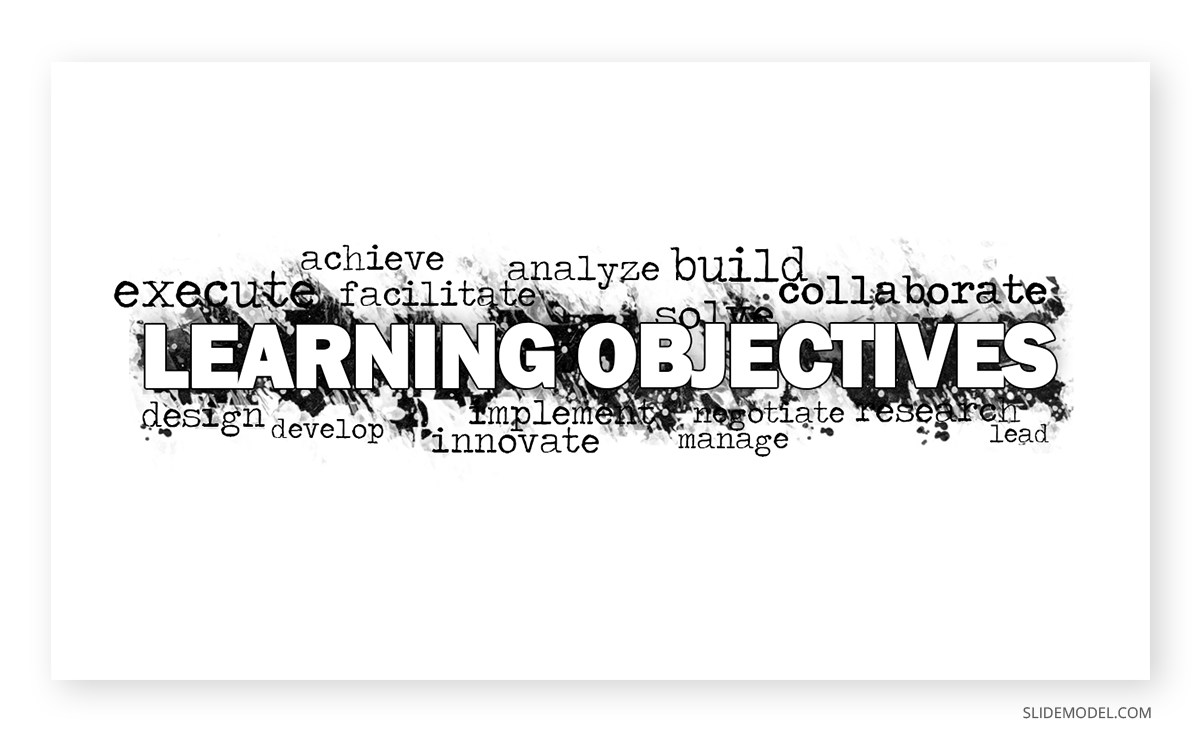
Measurable
Learning objectives, serving as evaluation criteria, should assist trainers in assessing the extent to which learners achieve the intended learning outcomes. Much of the impact training has on learners is internal and remains unseen. Learners may alter their perspectives, shift attitudes, and acquire new knowledge [6]; however, trainers cannot directly observe the internal processes of a trainee’s mind. They must rely on external indicators (observable actions or statements) to gauge the trainee’s progress. Therefore, assessing progress based on what a student “learns,” “understands,” “knows,” or “feels” becomes challenging. Learning objectives, therefore, should focus on observable and measurable changes. An objective can be made measurable by adding specific criteria. It could specify a percentage of accuracy, a number of items, a time frame, or other measurable criteria. For example, the learner will solve 90% of math problems correctly.
Relevant to the Training Program
Objectives must directly contribute to the overall goals and purpose of the training program, maintaining relevance and coherence. Learning objectives should address these questions. Is the objective aligned with the program’s primary goal(s)? Will achieving the objective contribute to reaching the main goal(s)? Design the course or training thoughtfully to ensure that each learning objective is relevant to training. Likewise, the learning materials, activities, and assessments should be interlinked.
Time-Bound (SMART Objectives)
A learning goal needs a defined timeframe for completion, like the conclusion of a lesson, module, or entire course. It is crucial to allocate sufficient time within the lesson, module, or course to accomplish the necessary steps for reaching the goal. In short, a learning objective should be smart;
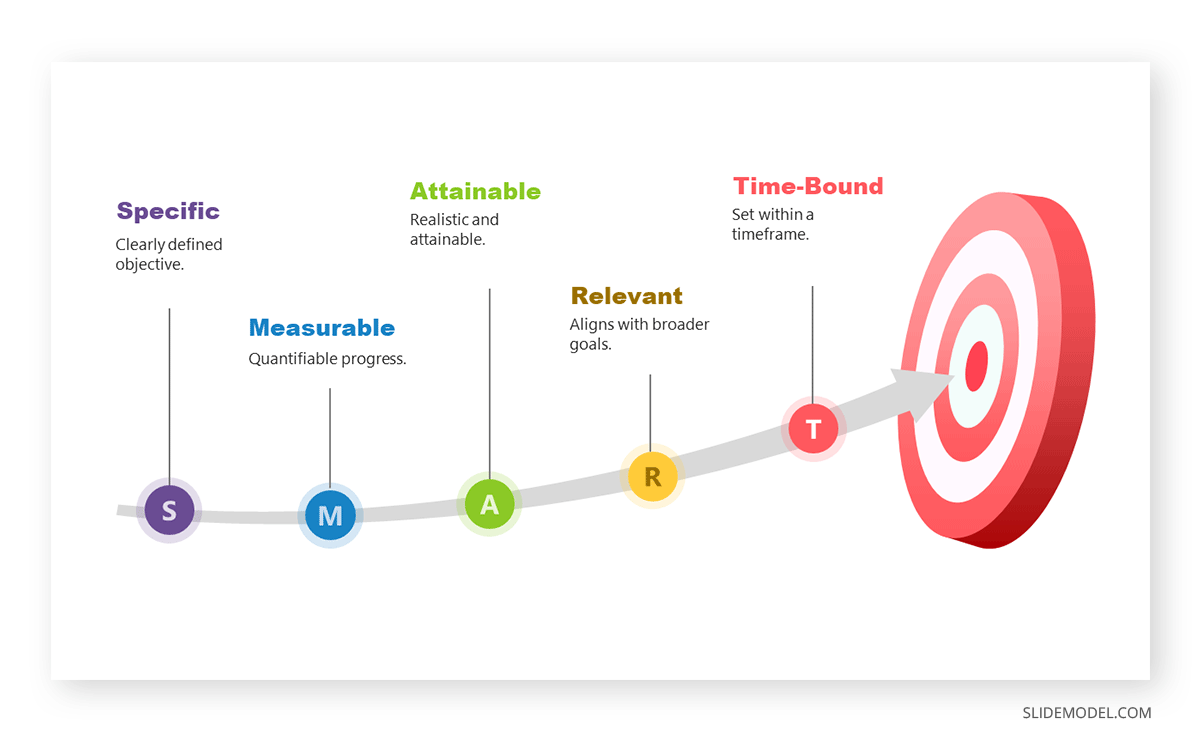
S- Specific: Effective learning objectives divide a broad subject into manageable parts and clearly outline the expected outcomes connected to these components.
M-Measurable: Learning objectives should be quantifiable, allowing for easy assessment of whether the desired outcome has been achieved.
A-Achievable: Considering the available resources, timeframe, Learner’s background, and readiness, set achievable objectives. The cognitive complexity of the learning goals should match both the training level and the learners’ proficiency. Therefore, take into account factors like whether it’s basic or advanced level training before making a learning objective.
R-Result Oriented: Learning objectives should emphasize the outcomes rather than the processes or tasks learners will undertake (such as presenting or completing a task). A good learning goal describes the end results – what knowledge, skills, or attitudes learners should gain based on what the trainer can assess.
T-Time bound: Clearly mention the timeframe if it’s relevant. This can assist in determining the level of performance learners need to demonstrate to be competent.
Steps to Write Learning Objectives
As you create your learning objectives, you need to follow these steps.
Step 1: Identify the Desired Outcome of the Training Program
Identifying the desired outcome sets the direction for your entire training program. It provides a clear goal for both trainers and learners. It aligns the training program with broader organizational goals. It sets expectations and helps measure the success of the program.
Begin by considering the broader organizational goals. What specific improvements in skills or performance will contribute to these goals?
Break down the outcome into measurable components. What specific skills or knowledge gaps exist? Then, envision the ideal scenario after the training – what should the team be capable of doing? What skills or knowledge do you want participants to gain?
The importance lies in setting a clear, achievable target that aligns with organizational objectives. When you identify the broader goal of the training program, narrow it down into a learning objective [8].

This step is crucial because it sets the direction for your entire training program. It defines what success looks like and guides the subsequent steps in the process. Consider the current state of the team, the challenges they face, and the skills they need to overcome those challenges.
Imagine you’ve assessed that your sales team struggles with closing deals effectively. The desired outcome, in this case, would be to improve their closing techniques and boost overall conversion rates. In the context of sales training, the desired result could be to enhance the sales team’s ability to close deals and increase conversion rates. Why is this important?
Step 2: Use Action Verbs to Describe What Trainees Will Be Able to Do
Now that we know what we want to achieve, the next step is to articulate it using action verbs. Action verbs make objectives actionable and observable. How do I choose these verbs? They should precisely convey the expected behaviors or skills. It’s essential to avoid vague verbs that can lead to unclear expectations. Action verbs are crucial in learning objectives as they define the observable behaviors or skills that learners should acquire. Choosing the proper verbs is essential for clarity and precision.
Action verbs describe an observable action, giving a clear picture of what learners are expected to do. Action verbs provide clarity on what exactly we expect our learners to do. They help in crafting specific and measurable objectives. When choosing action verbs, consider the level of performance you want to see. Words like ‘understand’ or ‘know’ are vague. Instead, opt for strong verbs that denote observable actions.
In our sales training program, we’ve chosen the action verb ‘demonstrate.’ This emphasizes the sales team’s importance in understanding and actively showcasing effective closing techniques.
We have come up with this learning objective so far;
“By the end of the training program, sales team members will be able to demonstrate effective closing techniques to increase conversion rates.”
‘Demonstrate’ is an intense action verb that implies a visible and practical application of knowledge. In sales, demonstrating effective closing techniques is a tangible and measurable skill.
Step 3: Ensure the Objective is Measurable
Measurability is crucial for assessing the success of your learning objective. It involves defining clear criteria to determine whether the desired outcome has been achieved. Without measurable criteria, evaluating the effectiveness of the training becomes challenging.
Attach specific metrics or criteria that provide a quantitative or observable way to assess success. This could involve percentages, numbers, or other tangible measures.
Think about how you can quantify or assess the outcome. In our example, we set a measurable criterion: a 15% increase in the overall conversion rate within the next quarter.
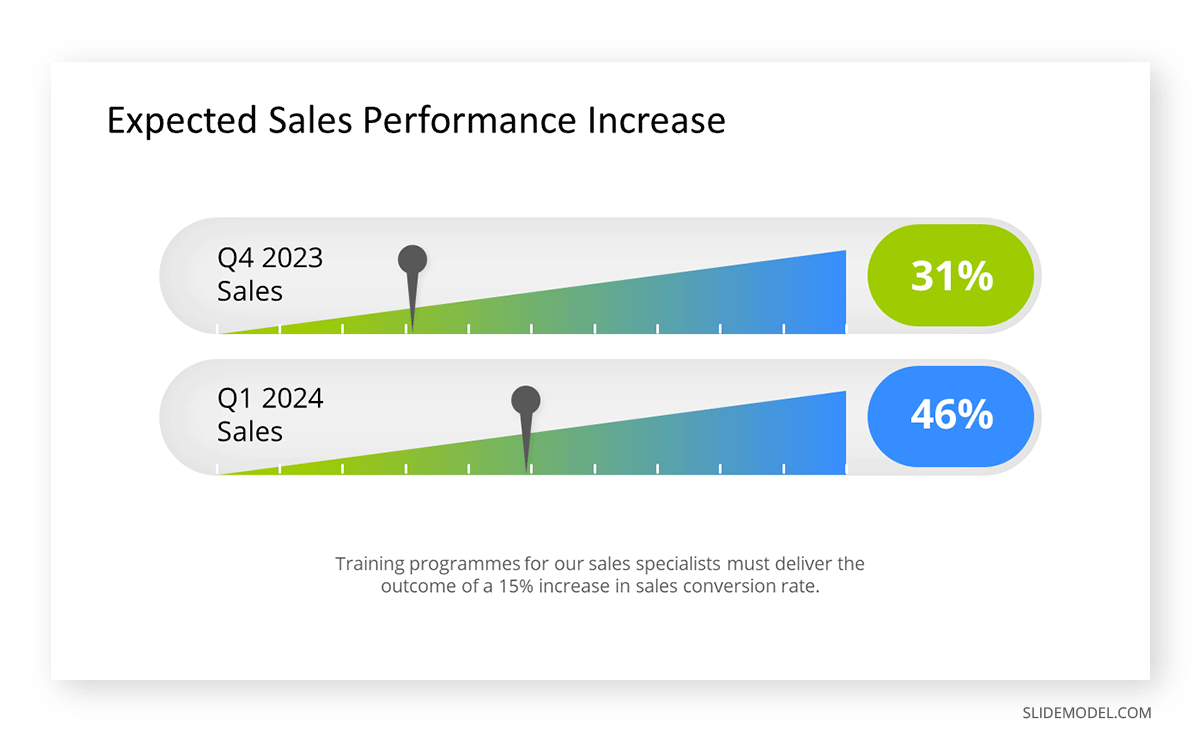
Step 4: Align the Objective with the Overall Goals of the Training Program
Aligning the objective with the overall goals ensures coherence and relevance. The aim should not be an isolated achievement but a meaningful contribution to the broader success of the training program.
Consider how achieving this specific objective fits into the larger picture. How does it support your training program’s overall goals and objectives and, by extension, your organization?
In our case, the overall goal is to improve the sales team’s performance to meet and exceed quarterly revenue targets. Our learning objective aligns perfectly by directly contributing to this overarching goal.
“By the end of the training program, sales team members will be able to demonstrate effective closing techniques, contributing to a 15% increase in the overall conversion rate within the next quarter, thereby supporting the overall goal of improving the sales team’s performance to meet and exceed quarterly revenue targets.”
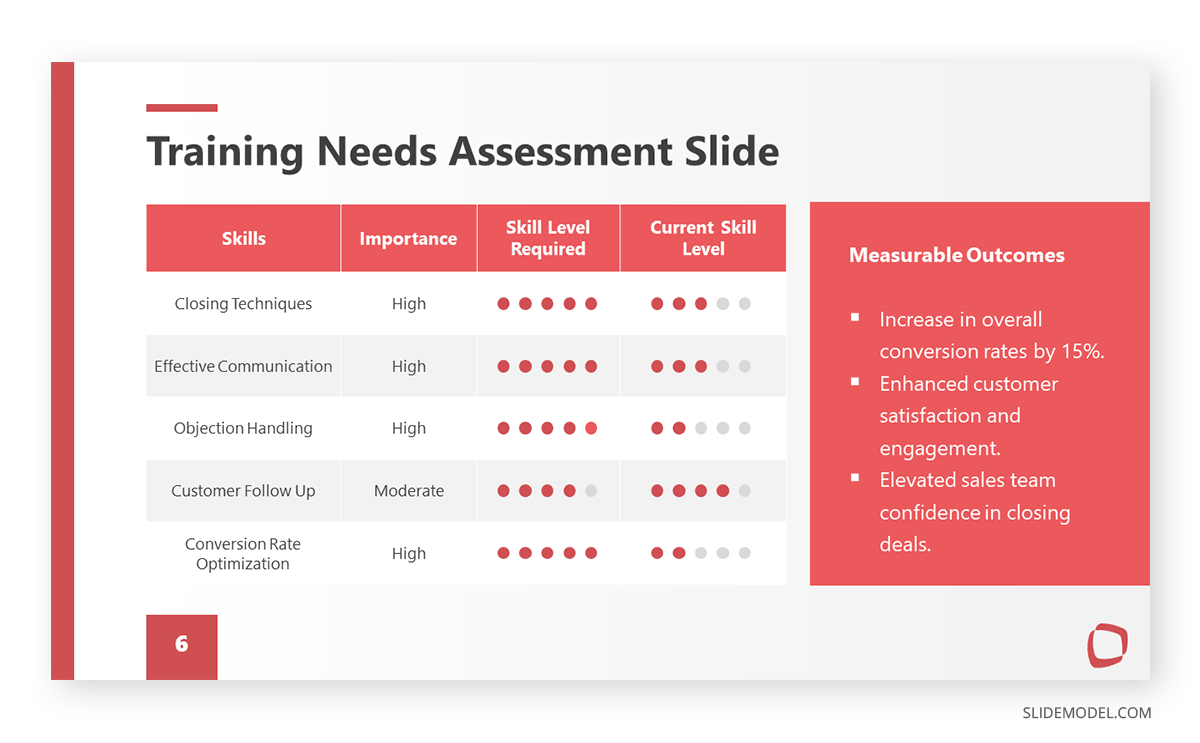
Real-Life Case Studies of Learning Objective Examples
So far, we’ve analyzed how to write actionable and measurable learning objectives, but now it’s time to consider how to represent these learning objectives in presentation slides with the idea of stepping into the shoes of an instructor. Thinking about the design aspects can be challenging for some; thus, we will showcase a series of learning objective examples in two different categories: training and lesson planning. Below each case, you can find a visual representation of the learning objective to deliver more audience engagement.
Training Learning Objectives Examples
A training is conducted by a firm on Time Management for Managers. This training is vital because effective time management is crucial for managers to maintain productivity and meet deadlines. It is realized that many managers struggle with task prioritization, leading to missed deadlines and increased stress.
Learning Objective Example 01
Use the Eisenhower Matrix to categorize tasks based on urgency and importance within two weeks.
This learning objective is evident in what managers need to do (Use the matrix), measurable by their ability to categorize tasks, achievable within two weeks, relevant to task prioritization, and time-bound.

Learning Objective Example 02
Implement project management software to streamline task organization and meet deadlines within one month.
This objective addresses the broader aspect of time management by introducing a tool. It specifies the action (implement software), is measurable through enhanced task organization, achievable in one month, relevant to meeting deadlines, and time-bound.
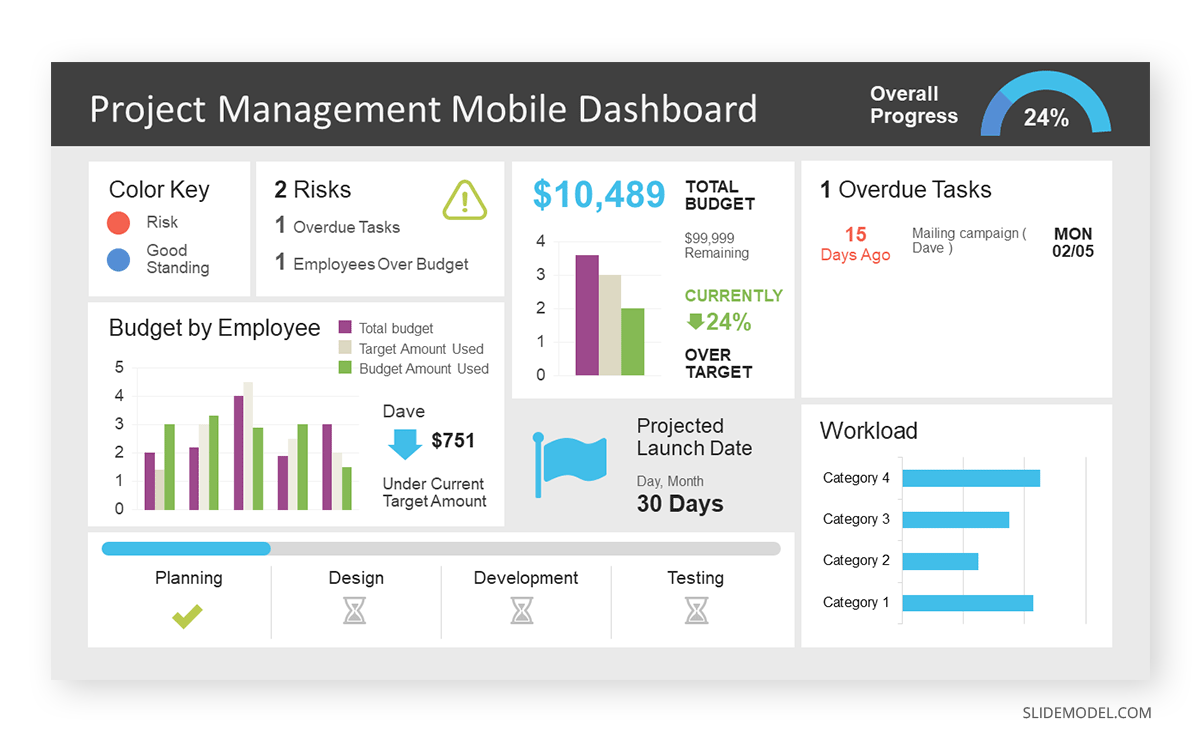
Lesson Objective Examples
A lesson is about understanding literary devices in poetry. Understanding literary devices is crucial for students to appreciate and analyze poetry effectively.
Example of Vague Objective
Learn about poetry devices.
This objective is too broad and lacks specificity. It doesn’t specify which poetry devices students should focus on. To enhance clarity, we should specify the devices, such as “Identify similes and metaphors in assigned poems.
A Well-Established Lesson Objective Example
Identify Similes and Metaphors in Assigned Poems during One Class Period

It is a clear and concise objective focusing explicitly on identifying similes and metaphors in assigned poems. Students will actively read and analyze poems to “identify” and differentiate between similes and metaphors. “Identify” is used as an action verb here, so the objective is actionable. Success is observable when students accurately point out similes and metaphors in the assigned poems during the class period. At the same time, it is relevant to the lesson plan that directly addresses the challenge of understanding and recognizing literary devices in poetry. It is achievable within the timeframe of one class period.
Another example can be visualized in the format of an end-of-unit exercise:
Develop a strategy for effective delegation, reducing workload stress by 20% over the next quarter.
Focusing on delegation, this objective is specific in developing a strategy that is measurable by workload stress reduction, achievable in the next quarter, directly relevant to the issue, and time-bound, providing a clear timeframe for improvement.
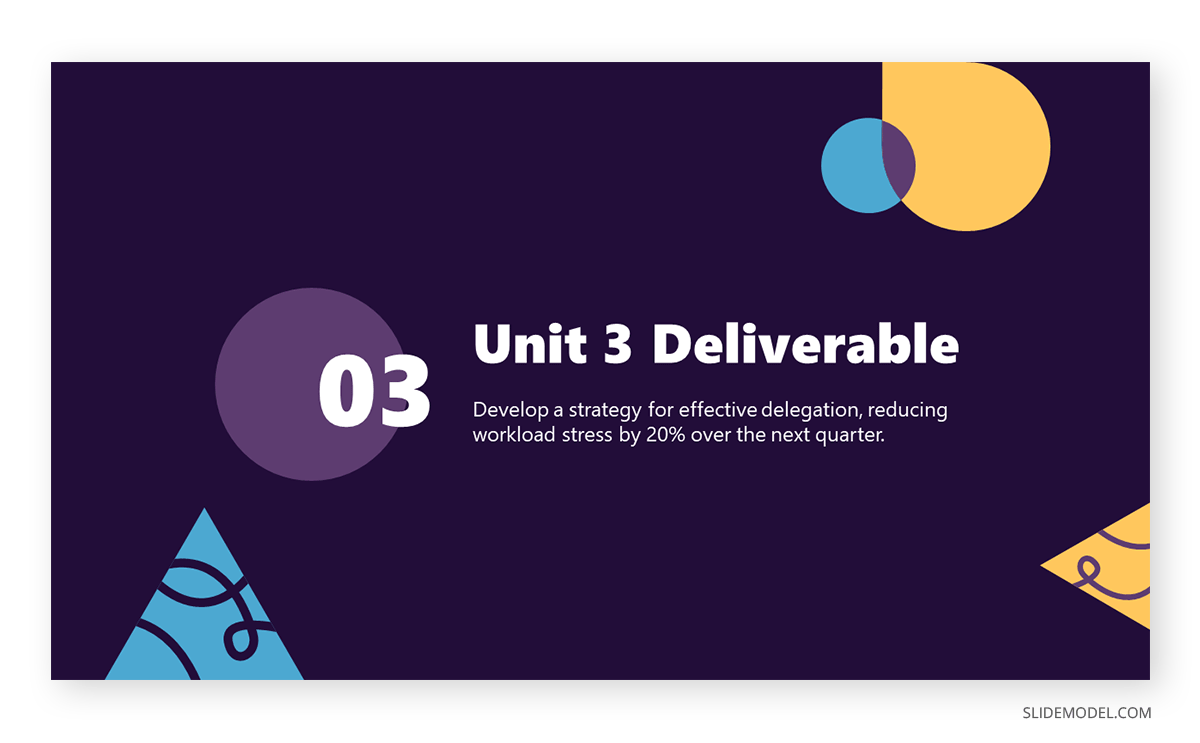
Common Mistakes to Avoid When Writing Learning Objective Examples
Vague or Unclear Objectives
Vague or unclear objectives lack specificity, making it challenging for learners to understand what is expected. When a purpose is unclear, it can lead to confusion and misinterpretation. To address this, learning objectives should be articulated with precision, clearly outlining the specific skill or knowledge area that learners are expected to acquire. This clarity provides a roadmap for both learners and instructors, fostering a more effective learning process.
Example of Lack of Clarity – “Write better essays.”
The term “better” is subjective and doesn’t provide a clear benchmark for improvement. We should define the improvement to enhance clarity, such as “Organize ideas logically within paragraphs using transitions.”
Objectives That Are Not Measurable
Measurability is crucial for assessing progress and achievement. Objectives that lack a measurable component make it challenging to determine whether the desired outcome has been met. Learning objectives should incorporate specific criteria or actions that can be observed, evaluated, or quantified to enhance measurability. This not only provides a clear standard for success but also allows for practical evaluation and feedback. Measurable objectives contribute to a more transparent and accountable learning process.
Example of Non-Measurable Objective – “Enhance academic writing abilities.”
The term “enhance” is vague and lacks a measurable outcome. To make it more effective, we should make it measurable, like “Apply proper citation formats in academic writing.”
Indeed, let’s delve into a detailed discussion on common mistakes to avoid when writing learning objectives without relying on excessive adjectives.
Objectives That Are Not Aligned with the Training Program’s Goals
Alignment between individual learning objectives and the broader goals of the training program is essential for overall program success. When objectives are not in harmony with the program’s goals, there is a risk of diverging efforts that may not contribute to the desired outcomes. Ensuring alignment involves thoroughly understanding the overarching program goals and carefully crafting objectives that directly support those goals. This strategic alignment ensures that every learning objective plays a meaningful role in achieving the overall objectives of the training program. For instance, if a training program aims to enhance customer service skills, an objective like “Master advanced technical troubleshooting” might not align with the program’s focus. To ensure alignment, objectives should directly contribute to the overarching goals of the training program. An aligned objective would be to “Resolve customer issues efficiently following company protocols.”
Tools and Resources to Represent Learning Objective Examples
You need resources like educational content guidelines, collaboration tools, and text editors to write practical learning objectives for courses or training. Presentation templates are crucial for efficiency, consistency, and visual appeal. They save time by providing pre-designed structures, ensuring a professional look, and allowing customization to match the course theme.
In essence, SlideModel offers a comprehensive toolkit for educators and trainers. From visual excellence to efficient customization and alignment with SMART goals, these templates elevate the process of creating learning objectives.
Using visually engaging graphics and layouts adds more clarity to learning objectives. This makes the content more attractive and facilitates better understanding for your audience. SlideModel offers an extensive collection of Google Slides templates, providing educators and trainers with a visually stunning canvas for crafting learning objectives.
The ready-made nature of PowerPoint templates significantly accelerates the aim of the learning creation process. Instead of starting from scratch, you can use these templates to structure your content quickly. This time-saving advantage allows you to focus on the substance of your learning objectives without getting bogged down by formatting complexities.
The Objective slide and other templates in SlideModel are customizable to suit the specific needs of your learning objectives. You can easily modify text, insert relevant images, and adapt the layout to align with your educational context. This customization feature ensures your learning objectives are visually appealing and tailored to your unique instructional requirements. Whether you are creating a detailed training module or a standalone learning objective presentation, these templates enhance the overall visual consistency, contributing to a polished and professional look.
Conclusion
Learning objectives are like guides in the learning world. Think of them as maps showing the way to knowledge and skills. With practical examples, we’ve made creating these objectives less of a mystery. They’re not just fancy educational talk; they’re like step-by-step plans for success. Whether you’re a trainer, someone designing lessons, or just curious about learning, nailing down these objectives becomes a shared way of talking about goals. The principles of specificity, measurability, relevance, and alignment are emphasized, showcasing the characteristics that make learning objectives genuinely effective.
References
[1] Melton, R. 1997. Objectives, Competencies, and Learning Outcomes: Developing Instructional Materials in Open and Distance Learning. London, UK: Kogan Page.
[2] Stapleton-Corcoran, E. 2023. Learning Objectives, Center for the Advancement of Teaching Excellence. University of Illinois Chicago. https://teaching.uic.edu/learning-objectives/.
[3] Barnett, S. M., & Ceci, S. J. 2002. When and Where Do We Apply What We Learn? A Taxonomy for Far Transfer. Psychological Bulletin, 128(4), 612-637.
[4] https://www.sciencedirect.com/topics/social-sciences/learning-objective
[5] Course Objectives & Learning Outcomes. https://resources.depaul.edu/teaching-commons/teaching-guides/course-design/Pages/course-objectives-learning-outcomes.aspx
[6] Course design (no date) CTE Resources. https://cteresources.bc.edu/documentation/learning-objectives/
[7] Learning Objectives – Eberly center – Carnegie Mellon University (no date) Learning Objectives – Eberly Center – Carnegie Mellon University. https://www.cmu.edu/teaching/designteach/design/learningobjectives.html
[8] Course design CTE Resources. https://cteresources.bc.edu/documentation/learning-objectives/
[9] Chatterjee, D., & Corral, J. (2017). How to Write Well-Defined Learning Objectives. The journal of education in perioperative medicine : JEPM, 19(4), E610.
[10] http://batchwood.herts.sch.uk/files/Learning-Objectives.pdf
